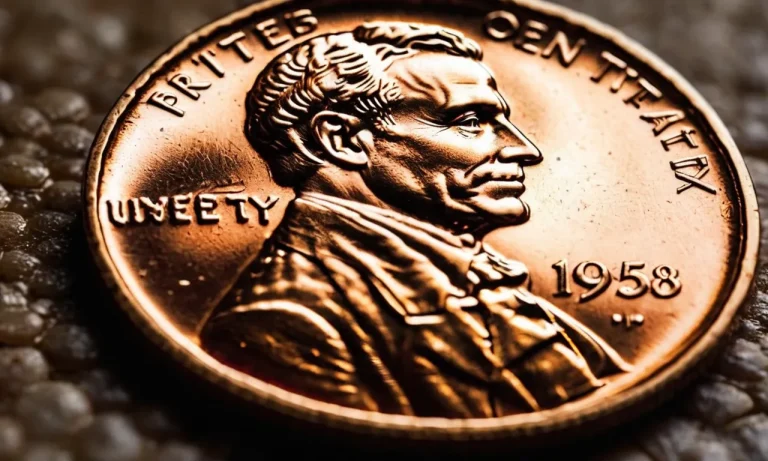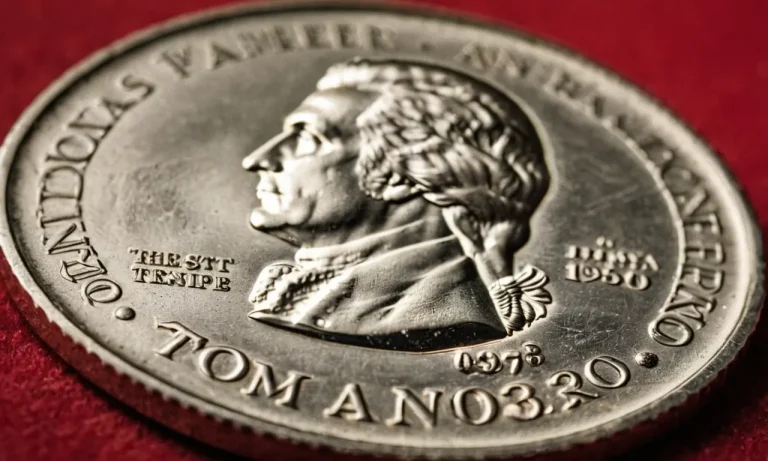Who is on the one-dollar bill? The one-dollar bill is one of the most ubiquitous banknotes in the United States and around the world. But have you ever wondered about the different faces and symbols that appear on it?
If you’re short on time, here’s a quick answer to your question: the main face on the one-dollar bill is George Washington, the first president of the United States. The reverse side features the Great Seal of the United States.
In this comprehensive article, we’ll take a close look at the history and meaning behind the portraits, symbols, words, and other design elements that make up the one-dollar bill. You’ll learn about George Washington, the Great Seal of the U.S., the symbolic eagle and shield, Latin phrases, and other hidden gems that may surprise you.
The Front of the $1 Bill
Portrait of George Washington
The front of the $1 bill features a portrait of George Washington, the first president of the United States. This engraved portrait is based on a painting by Gilbert Stuart. Washington is depicted wearing a wig, which was common fashion in the late 18th century.
His stern but calm expression symbolizes the steadfast leadership he provided as president from 1789 to 1797.
The Words ‘United States of America’
Arched around the top of the $1 bill’s front side are the words “United States of America.” This refers to the official name of the country. It reflects the unity of the 13 former British colonies that came together to declare independence in 1776.
The spelling of the country’s full name is a symbol of national sovereignty.
The Words ‘Federal Reserve Note’
Printed in capital letters along the front bottom margin of the $1 bill are the words “Federal Reserve Note.” This indicates that the $1 bill is legal tender currency authorized by the Federal Reserve System, America’s central bank.
Federal Reserve Notes were first issued in 1914 as a more flexible form of paper money to meet the country’s growing financial needs.
Serial Numbers and Federal Reserve Seal
Also located along the front bottom margin of the $1 bill are two serial numbers and the Federal Reserve seal. The serial numbers are unique identifiers printed on each $1 bill that function to prevent counterfeiting.
The Federal Reserve seal, depicting a bald eagle and a shield, certifies that the paper note was issued by the U.S. Federal Reserve System.
The Back of the $1 Bill
The Great Seal of the United States
The back of the $1 bill features the Great Seal of the United States, which includes several important symbols. At the top is an unfinished pyramid with 13 steps, representing the original 13 colonies.
Above the pyramid is the Eye of Providence in a triangle, symbolizing the divine guidance of the fledgling nation.
The Pyramid
The unfinished pyramid has 13 courses or steps, denoting the 13 original states that declared independence from Great Britain. The pyramid is also symbolic of strength and durability. According to the Department of State, the unfinished nature of the pyramid represents the belief that the United States was still a developing nation with more growth to come.
The Bald Eagle
A bald eagle clutching an olive branch and arrows in its talons is perched near the top of the pyramid. The eagle symbolizes liberty, freedom, and the ability to self-govern with vision, strength, and courage.
The olive branch and arrows denote the U.S. preference for peace but readiness to fight to protect itself.
E Pluribus Unum
“E pluribus unum” is a Latin phrase meaning “Out of many, one.” It refers to how the 13 colonies came together as one unified nation. The Department of State says it reflects “the one people forged from many as the country welcomed immigrants from around the world.”
Annuit Cœptis
“Annuit Cœptis” is another Latin phrase meaning “[God/Providence] Has Favored Our Undertakings.” It signifies that divine providence assisted in the founding of the United States. The all-seeing eye and glory in the clouds around the triangular emblem reinforce the notion of divine guidance.
Novus Ordo Seclorum
The Latin phrase “Novus ordo seclorum” means “A new order of the ages” about the beginning of the new republic and its initiation of a radical break from the monarchies of the past. The Department of State says it signifies “the beginning of the new American Era.”
MDCCLXXVI
The Roman numerals MDCCLXXVI stand for 1776, the year the Declaration of Independence was signed. This representation at the base of the pyramid connects the country’s founding principles to the unfinished pyramid symbolizing its ongoing development.
The History Behind the Symbols
Meaning of the Pyramid
The unfinished pyramid on the back of the $1 bill is a powerful icon representing strength and duration. Its 13 steps symbolize the 13 original states and the year 1776 at the base represents the Declaration of Independence.
The unfinished nature signifies that the country was still a work in progress. Some scholars believe the eye of Providence watching over the pyramid conveys the idea that God favors the prosperity of the United States.
Significance of the Bald Eagle
The bald eagle was chosen as a symbol of the United States because of its long life, great strength, and majestic looks. Its role as the nation’s bird represents freedom and courage. Eagles are exceptionally swift creatures that swoop and dive on their prey with deadly accuracy signifying the swiftness of American fighting forces in upholding justice and equality.
The arrows clutched in the eagle’s talons symbolize readiness for war if war is necessary to protect the country’s interests.
Translation of the Latin Mottos
There are two Latin phrases on the front of the one-dollar bill. “Annuit Cœptis” above the pyramid translates to “He [God] has favored our undertakings”. This ties to the common belief that God watches over and supports this nation.
The phrase “Novus Ordo Seclorum” below the pyramid translates to “New Order of the Ages”. It conveys the idea that the founding of the United States ushers in a new era.
The 1776 Date
The numbers 1776 at the base of the pyramid memorialize the signing of the Declaration of Independence and mark the year the U.S. became an independent country no longer under Britain’s rule. Ushering in a new governmental model by the people and for the people, the founding ideals of the fledgling nation were liberty, rights, and equality.
The Treasury Department commissioned the first $1 bills in 1862 and paper money has been imbued with these symbols of freedom and democracy ever since.
Who Is On The One-Dollar Bill – Conclusion
The iconic one-dollar bill contains a surprising amount of symbolism and history in its design. As we’ve explored, everything from the portrait of George Washington to the Great Seal images like the pyramid and eagle have deeper meaning and significance for the founding ideals of American democracy.
So next time you have a $1 bill pass through your hands, take a moment to reflect on the hidden stories it contains. The symbols represent over two centuries of American history and values worth understanding and preserving.




